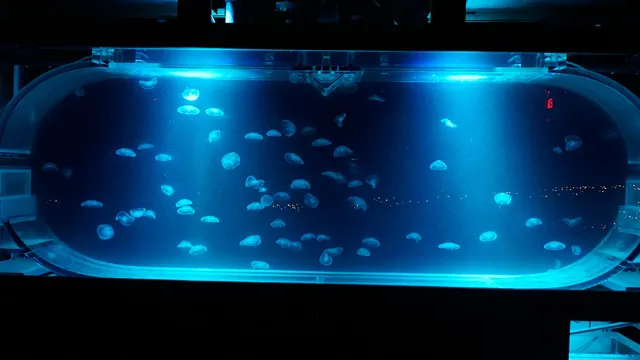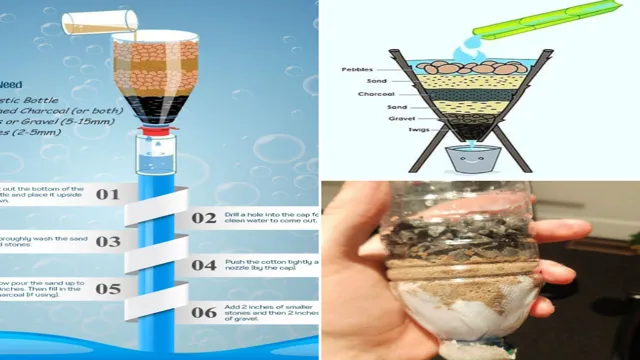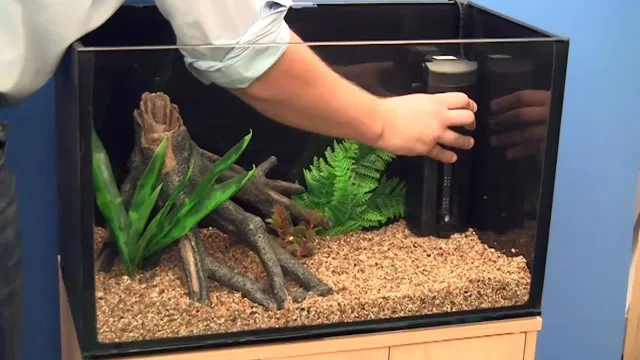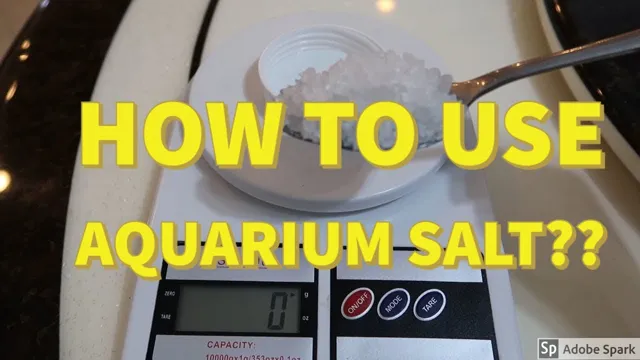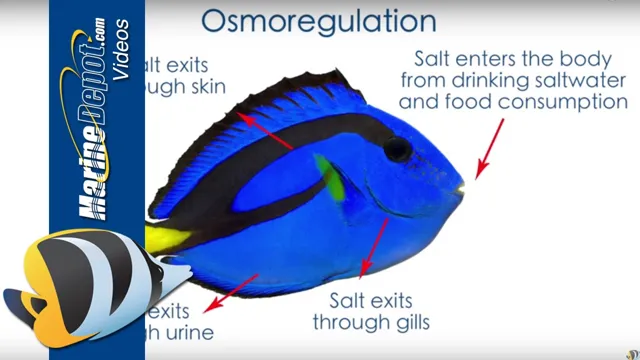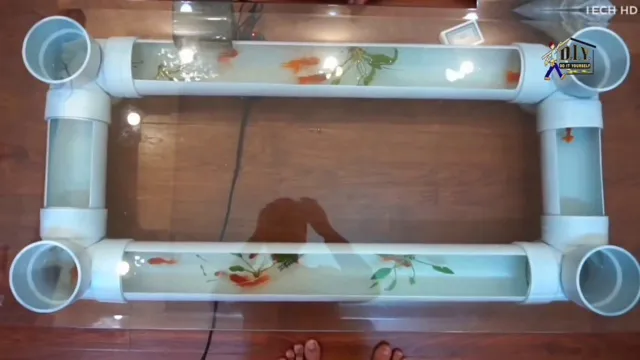Have you ever wanted an aquarium that stands out and mesmerizes with its unique aquatic creatures? If so, setting up a jellyfish aquarium may be just what you need. Jellyfish are fascinating creatures that gracefully float through the water, their tentacles trailing behind them like streamers. Setting up a jellyfish aquarium may seem daunting, but with the right supplies and a little bit of patience, you can create a beautiful home for these otherworldly creatures.
In this blog post, we’ll guide you through the process of setting up a jellyfish aquarium, from selecting the right tank to choosing the perfect jellyfish species. Let’s dive in!
Choosing the Right Type of Jellyfish
If you are considering setting up a jellyfish aquarium, the first thing you should know is that there are several different types of jellyfish to choose from. This decision is crucial because each species has its unique requirements when it comes to tank size, water filtration, feeding, and lighting. For example, Moon jellies are a popular species that are relatively easy to care for and adjust well to aquarium life, making them a great choice for beginners.
On the other hand, some species may require a more advanced level of care, such as the Upside-down jellyfish, which should only be kept by experienced jellyfish keepers. Overall, take the time to research and ask questions before making any decisions to ensure you choose the right type of jellyfish for your aquarium and are equipped to provide the proper care they need to thrive.
Research Different Species
If you’re looking to keep jellyfish as pets, you need to research the different species to choose the right type. Different species of jellyfish have varying needs in terms of water conditions, feeding habits, and tank size. Some popular species include Moon Jellyfish, Flower Hat Jellyfish, and Blue Blubber Jellyfish.
Moon Jellyfish are widely available, easy to care for, and make great starter jellyfish. Flower Hat Jellyfish are more challenging to care for, but they have a stunning appearance with a distinctive hat-like structure. Blue Blubber Jellyfish are hardy and curious creatures that are suitable even for beginners.
When choosing the right type of jellyfish, consider your experience level, tank size, and the availability of food sources. Make sure you conduct thorough research to provide the best possible care for your jellyfish.

Determine Tank Size and Capacity
When it comes to keeping jellyfish as pets, choosing the right type of jellyfish is crucial to their survival. There are many different species of jellyfish, each with their own unique needs and characteristics. Some popular types of jellyfish for home aquariums include moon jellyfish, sea nettles, and lion’s mane jellyfish.
Before deciding on a type of jellyfish, it’s important to research their specific requirements in terms of water temperature, diet, and tank size. Some species of jellyfish require colder water while others thrive in warmer temperatures. Additionally, certain types of jellyfish can grow quite large and require a significantly larger tank.
Overall, it’s important to choose a type of jellyfish that fits your level of experience as well as the environment you can provide for them. By doing so, you’ll ensure that your new pet jellyfish has the best chance of thriving in its new home.
Decide on Filtration System
When it comes to setting up a jellyfish tank, one of the most crucial decisions you will need to make is choosing the right type of jellyfish for your tank. While you may be tempted to choose based on aesthetics alone, it is important to consider the needs and requirements of the jellyfish species in question. Some jellyfish types are more challenging to keep and require more specialized care and equipment than others.
For instance, certain species may require lower water flow rates or specific light requirements, which will affect your choice of filtration system. It is also important to note that some jellyfish species have stinging tentacles that can harm other tank inhabitants or even humans, so it is essential to research jellyfish species thoroughly before making your choice. Ultimately, the right choice of jellyfish will depend on your experience level, the type of tank you plan to set up, and your personal preferences.
So, take your time, do your research, and choose a jellyfish that will thrive in your tank!
Setting Up the Tank
Setting up a jellyfish aquarium can be a fun and rewarding project. There are a few important things to consider before getting started. First, you’ll need to choose the right size tank for the species of jellyfish you want to keep. (See Also: How to Keep Saltwater Aquarium Clean: 10 Easy Tips for a Pristine Tank)
A larger tank will be needed for larger species, while smaller jellyfish can be kept in smaller tanks. In addition to the tank itself, you’ll need a filtration system designed specifically for jellyfish. A good filtration system will cycle the water and keep it clean of any debris or waste from the jellyfish.
Next, you’ll need to add salt to the water to create a suitable environment for the jellyfish. Finally, add some live food and any decorations you want to the tank, and your jellyfish aquarium is ready to go! Overall, setting up a jellyfish aquarium can be a fun and rewarding experience, but it’s important to make sure you have the right equipment and conditions to keep your jellyfish healthy and happy.
Add Gravel and Live Rock
In order to set up your tank, it’s important to add both gravel and live rock to provide a natural and healthy environment for your fish. Gravel not only adds aesthetic value, but it also serves a functional purpose by providing a surface for beneficial bacteria to grow. These bacteria are essential for breaking down fish waste and keeping the water clean.
When selecting gravel, choose a size that is appropriate for the size of your fish and the type of filter you’re using. Live rock, on the other hand, provides a natural source of filtration and a place for your fish to hide and explore. It also serves as a natural habitat for beneficial bacteria and other microorganisms that maintain a healthy balance in the tank.
When adding live rock, it’s important to properly cure it to ensure any harmful or unwanted organisms are eliminated before introducing it to your tank. By incorporating both gravel and live rock in your set up, you’ll be creating a natural and functional environment that promotes the health and well-being of your fish.
Fill with Saltwater
Setting up a saltwater tank can be an exciting venture, but it’s important to take the necessary steps to ensure that it’s done correctly. Before adding any fish or live rock, the first step is to fill the tank with saltwater. This may seem straightforward, but it’s crucial to get the right salt mix and to mix it properly.
For beginners, it’s recommended to use a pre-made salt mix instead of creating one from scratch. Once the mix is selected, fill the tank with RO/DI (Reverse Osmosis/Deionized) water and slowly add the salt mix, mixing it with a powerhead or a mixing pump to ensure that it’s fully dissolved. A hydrometer or a refractometer can be used to measure the salinity of the water, and it’s recommended to aim for a salinity level of around
02 Once the saltwater is mixed to the correct salinity level, it’s ready for the next step of adding live rock and establishing a healthy environment for marine life. With a bit of patience and attention to detail, setting up a saltwater tank can be a rewarding experience.
Set Up Lighting System
Setting up the lighting system for your aquarium is an essential step in creating a healthy and thriving environment for your fish and plants. The first thing you need to consider is the type of lighting your tank requires. If you have a planted tank, then you’ll need to invest in specific lighting that promotes plant growth.
For fish-only tanks, standard lighting is sufficient. Once you’ve chosen the right type of light, it’s important to position it correctly. Ensure that the light is not too close to the water surface as it can cause excessive heat and damage to both your fish and plants.
Additionally, set a timer for your lights to regulate the amount of light your aquarium receives each day. This will help create a stable and consistent environment for your aquatic life. Finally, remember to clean your light fixture regularly to prevent any build-up of algae or bacteria.
With proper lighting set up, your aquarium will thrive, and your fish and plants will thank you for it.
Acclimate Jellyfish to Tank
If you’re looking to add jellyfish to your tank, it’s vital to ensure they’re properly acclimated to their new home. One of the first steps to take is setting up the tank to mimic the natural environment of the jellyfish. Ideally, the tank should be made of clear, non-toxic materials and have a filter system that will keep the water clean and oxygenated. (See Also: How to Divide an Aquarium for Gerbil: Tips and Tricks for Creating Separate Spaces)
Additionally, you’ll need to invest in a good quality salt mix, as jellyfish require a specific salinity level to thrive. Once the tank is ready, it’s crucial to acclimate the jellyfish properly to avoid any shock to their system. This process involves slowly introducing them to the water in the tank, while monitoring their behavior and adjusting the salinity level as needed.
With proper acclimation, your new jellyfish will be able to thrive in their new home.
Maintaining Your Jellyfish Aquarium
Maintaining a jellyfish aquarium can seem daunting, but it doesn’t have to be. To start, make sure you have the right equipment, including a high-quality filtration system and specialized LED lighting. Regular water testing and changes are also important to keep the water clean and clear for your jellyfish.
When it comes to feeding, jellyfish require a specific diet and feeding schedule. Research the species of jellyfish you have and provide them with a balanced diet of zooplankton and other small organisms. Additionally, regular tank maintenance should include gentle cleaning of the sides and bottom of the tank, as well as checking for any signs of damage or illness in your jellyfish.
With proper care and attention, your jellyfish aquarium can be a peaceful and beautiful addition to your home.
Monitor Water Parameters
Jellyfish Aquarium, Water Parameters Maintaining your jellyfish aquarium can be a fun and rewarding experience, but it also requires regular upkeep to ensure your jellyfish thrive in their new environment. One of the most crucial aspects of maintaining your jellyfish aquarium is monitoring the water parameters. This includes testing for pH, salinity, ammonia, nitrites, and nitrates.
These tests are essential as changes to these parameters can cause stress to your jellyfish or even death. Ensure you have proper test kits to assess the water parameters accurately, and regularly conduct tests to make adjustments as needed. Also, ensure you do partial water changes regularly, keeping the aquarium clean, and avoiding a buildup of waste.
When it comes to maintaining a jellyfish aquarium, prevention is always better than cure. Therefore, it’s essential to keep an eye on the water parameters to ensure your jellyfish live happy and healthy lives!
Clean Tank Regularly
If you’re an aspiring jellyfish keeper, maintaining the cleanliness of your aquarium is crucial to keeping your jellies happy and healthy. One of the most important things you can do is to clean your tank regularly. Dirt and debris can build up quickly in an aquarium, and this can have a significant impact on the quality of water in which your jellyfish live.
To keep your tank clean, consider using a siphon to vacuum up food debris and waste particles that have accumulated on the gravel or sand substrate. You should also keep an eye on the walls of the tank and use a scraper to remove any algae that have formed. Be sure to use a gentle touch when cleaning your jellyfish tank to avoid disturbing the delicate ecosystem that you have created.
Ultimately, keeping your jellyfish aquarium clean is a critical part of ensuring that your jellies thrive in their home. So, make it a habit to clean your tank regularly to keep your pets healthy and happy.
Feed Jellyfish Appropriately
When it comes to maintaining a jellyfish aquarium, one of the most important things you need to do is feed them appropriately. Jellyfish are delicate creatures and require a specific diet to thrive. Overfeeding or underfeeding can cause health problems, so it’s important to get it right.
The diet of your jellyfish will depend on the type you have, so it’s essential to do your research. Some jellyfish will thrive on a diet of brine shrimp, while others may require a mix of plankton and other small organisms. It’s also important to avoid overfeeding, as excess food can lead to water pollution and bacterial growth. (See Also: How to Clean Moneywort Aquarium Plants: Tips and Tricks for a Healthy Tank)
Always feed your jellyfish small amounts at a time and remove any uneaten food promptly. With the right diet and care, you can keep your jellyfish healthy and happy for years to come.
Conclusion
Congratulations! You’ve successfully learned how to create your very own jellyfish aquarium. Now you can watch these beautiful creatures float gracefully in the comfort of your own home. However, be warned that while jellyfish may appear delicate and serene, they still pack a mighty sting.
Just like these gelatinous creatures, may your aquarium always be a stunning and captivating sight that leaves all who witness it in awe. Happy jellyfishing!”
FAQs
What is a jellyfish aquarium?
A jellyfish aquarium is a specially designed tank that houses live jellyfish as a decorative element.
How do you set up a jellyfish aquarium?
To set up a jellyfish aquarium, you will need a specialized tank, a filtration system, a heater, and live jellyfish. Follow the instructions carefully to ensure that your jellyfish are comfortable and healthy.
Can jellyfish be kept in a regular fish tank?
No, jellyfish cannot be kept in a regular fish tank. They require special care and a specific type of filtration system to thrive.
What type of jellyfish can be kept in an aquarium?
Moon jellyfish and blue blubber jellyfish are the most commonly kept jellyfish in aquariums.
How often do you need to feed jellyfish in an aquarium?
Jellyfish do not require feeding on a daily basis. Typically, they can be fed once or twice a week.
Do jellyfish require special lighting in an aquarium?
Yes, jellyfish require a specific type of lighting, such as LED lights, that mimic their natural habitat.
How can you prevent jellyfish from getting sucked into the filtration system?
You can prevent jellyfish from getting sucked into the filtration system by using a special type of filtration system designed for jellyfish that uses a slow flow rate.

